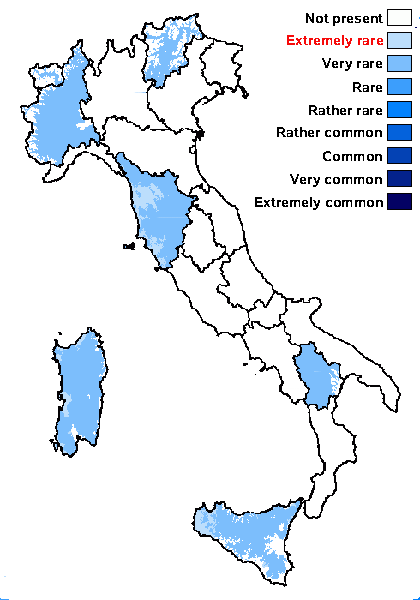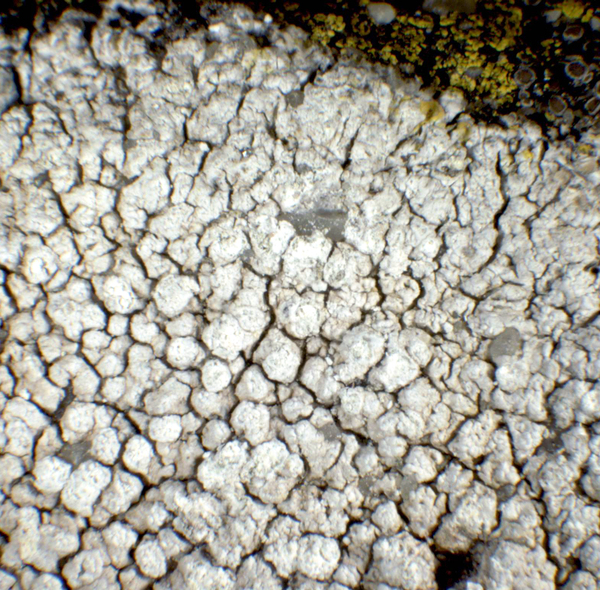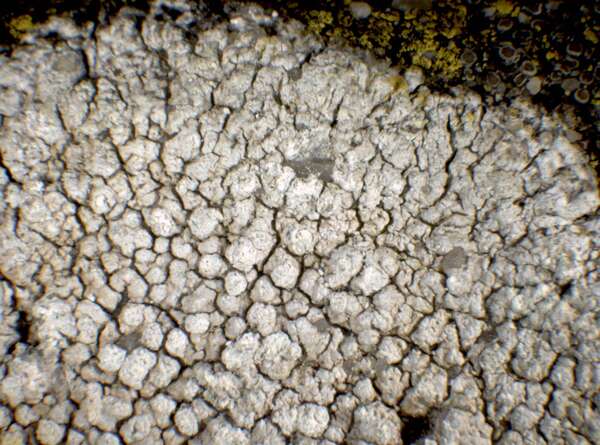Pertusaria digrediens Nyl.
Act. Soc. Linn. Bordeaux, 53: 91, 1898.
Synonyms:
Distribution: N - TAA, Piem, VA (Piervittori & Isocrono 1999). C - Tosc (TSB 36928), Sar (Rizzi & al. 2011, Giordani & al. 2013). S - Bas (Nimis & Tretiach 1999), Si (TSB 11411).
Description: Thallus crustose, episubstratic, rather thick, grey-white to grey, continuous to finely rimose but usually not areolate, well delimited by a grey-white prothallus, sorediate. Soralia orbicular, well-delimited, slightly immersed in the thallus, strongly convex, pure white. Medulla I+ (sometimes indistinctly) pale blue. Apothecia frequent, lecanorine, immersed in thalline warts, 1-2(-3) per wart. Asci (1-)2-spored, broadly cylindrical, the apex with a broad ocular chamber, the outer sheath K/I+ blue, otherwise K/I-, with an inner extensible layer, Pertusaria-type. Ascospores 1-celled, hyaline, ellipsoid, (65-)100-150 x 50-70 µm. Photobiont chlorococcoid. Spot tests: cortex K-, C-, KC-, P-; medulla and soralia K+ yellow turning brownish, C-, KC- or KC+ fleeting pink, P+ orange-red. Chemistry: protocetraric acid. Note: on siliceous rocks below the subalpine belt; closely related to Lepra leucosora, this taxon deserves further study. It clearly belongs into the genus Lepra.
Growth form: Crustose
Substrata: rocks
Photobiont: green algae other than Trentepohlia
Reproductive strategy: mainly asexual, by soredia, or soredia-like structures (e.g. blastidia)
Poorly known taxon in need of further study
Commonnes-rarity: (info)
Alpine belt: absent
Subalpine belt: absent
Oromediterranean belt: absent
Montane belt: very rare
Submediterranean belt: very rare
Padanian area: absent
Humid submediterranean belt: very rare
Humid mediterranean belt: extremely rare
Dry mediterranean belt: absent

Predictive model
Herbarium samples
Growth form: Crustose
Substrata: rocks
Photobiont: green algae other than Trentepohlia
Reproductive strategy: mainly asexual, by soredia, or soredia-like structures (e.g. blastidia)
Poorly known taxon in need of further study
Commonnes-rarity: (info)
Alpine belt: absent
Subalpine belt: absent
Oromediterranean belt: absent
Montane belt: very rare
Submediterranean belt: very rare
Padanian area: absent
Humid submediterranean belt: very rare
Humid mediterranean belt: extremely rare
Dry mediterranean belt: absent

Predictive model
| Herbarium samples |
 DOLICHENS
DOLICHENS




